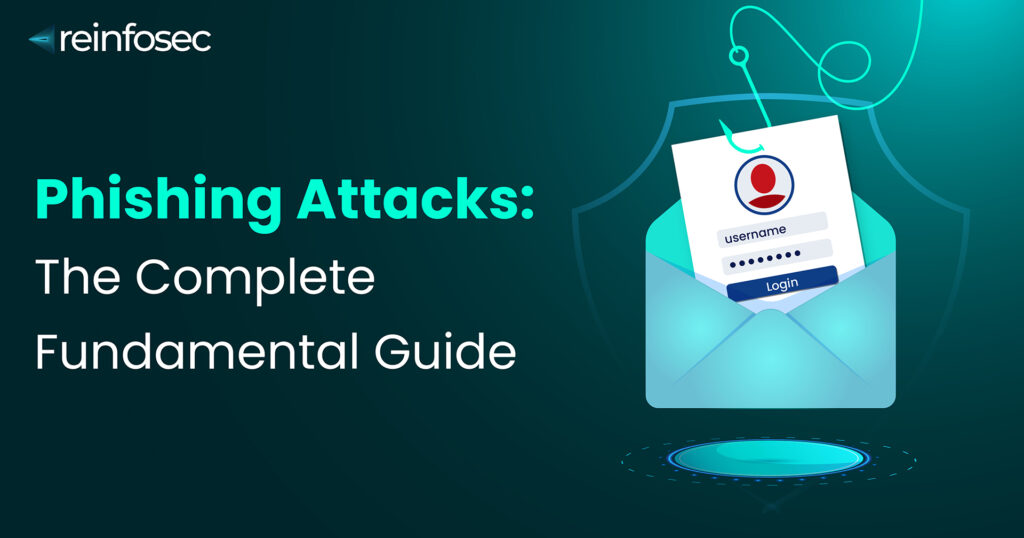Phishing Attacks are the most common forms of cyber attacks to exist in the digital era. For instance, let’s say a user/consumer is receiving a message from their banking institution with a warning of malicious activity on their account. Out of panic or as a precaution, they will be tempted to click on the link to verify the information. But, only after clicking that link, they will realise that they’ve been a victim of a phishing scam.
The usual thought process of clicking a link that comes with such an important message is the urge to resolve the issue quickly. That very urge is the focused target point for the hackers during a phishing attack launch. It is the most widely used form of cyber attack and nowadays, they are used for targeting both individuals and businesses. To avoid getting exploited one must understand how these attacks work on a fundamental level. Through this blog, you will get a better understanding of phishing attacks and how they can be prevented efficiently.
What is Phishing? And how does it work?
Just like any problem, the first thing to be aware of is how these attacks are carried out and the complete process of it. Let’s understand the typical process followed during phishing scams.
- The hacker identifies a potential group of victims based on their social activities (job profile, working place, etc.) over the internet.
- Now, the hacker will curate a message that will look genuine to the targeted people. The message will usually look very authentic and professional.
- The phishing message will then be sent to the targeted people. Phishing is usually carried out through text messages, phishing emails, social media links or even a phone call.
- As the potential victims respond to those sent bait/messages the hacker gets full control over their electronic devices.
- Once infiltration is done, now the attacker gets their hands on all types of information related to the victim without their knowledge.
As years passed, people began to spot phishing messages and carefully avoided the trap. Once the hackers’ success rate went down, they came back with an even stronger form of attack called Spear Phishing.
Phishing Vs Spear Phishing
Conventional phishing attacks are targeted towards a large group of people and their methods involve broad-based tactics. Whereas, spear phishing is a more focused approach that can be used to target specific individuals or an organisation. Let’s explore the difference between these two:
| Phishing | Spear Phishing |
| Targeted towards a large group of individuals. | A more accurate approach with a focus on individuals or an organisation. |
| It involves the usage of automated tools for sending out the bait messages. | Personalised messages are sent based on the research done on the potential victim. |
| The chance of getting scammed is relatively less due to the generic nature of the message. | The personalisation makes it harder to identify and eliminate the threat. |
| Can be sent with minimal effort. | Requires a more advanced technique to execute properly. |
Phishing Attack Prevention: Essential Steps to Protect your Oraganization from Phishing
In the previous sections, we have explored the tactics used in phishing and spear phishing. Now, let’s explore the necessary measures needed for phishing attack prevention. The steps to protect your organisation from phishing scams are:
- Employee Awareness: Regular training sessions on phishing attacks will help educate employees about the seriousness of such phishing scams. Other than that, conducting simulated phishing attacks can be very useful in raising awareness among employees.
- Technical Protection: By implementing strict email security filters, organisations can block out phishing emails. To prevent users from accessing malicious websites, organisations can adopt URL filtering. For protecting sensitive accounts, it is best to implement multi-factor authentication.
- Incident Response Plan: When an organisation wants to address phishing attacks effectively, it is important to create a detailed incident response. Establishing clear-cut protocols for communication helps with effective incident response. Consistent review and testing are essential for high efficiency.
- Expert Data Security: End-to-end data encryption is important to shield sensitive data from unauthorised access. Make sure to implement robust access control to limit access to confidential data. Ensure regular backups for recovery during any breach.
These are the fundamentals that need to be in place to safeguard your organisation’s information from getting hacked. Having said that, it is also important that the quality of security measure implementation plays a major role in the efficiency of execution. Make sure to pick out an expert in cybersecurity to handle your online security requirements.
Final Thoughts
Cyber threats are in constant evolution. Organisations must stay informed and educate themselves about the latest phishing attacks to not fall into those traps. By having a proactive approach towards mitigating cyber threats, one can stay ahead of these threats. Remember, being aware of the latest threats and staying vigilant about those are the keys to survival in this cyber world.

